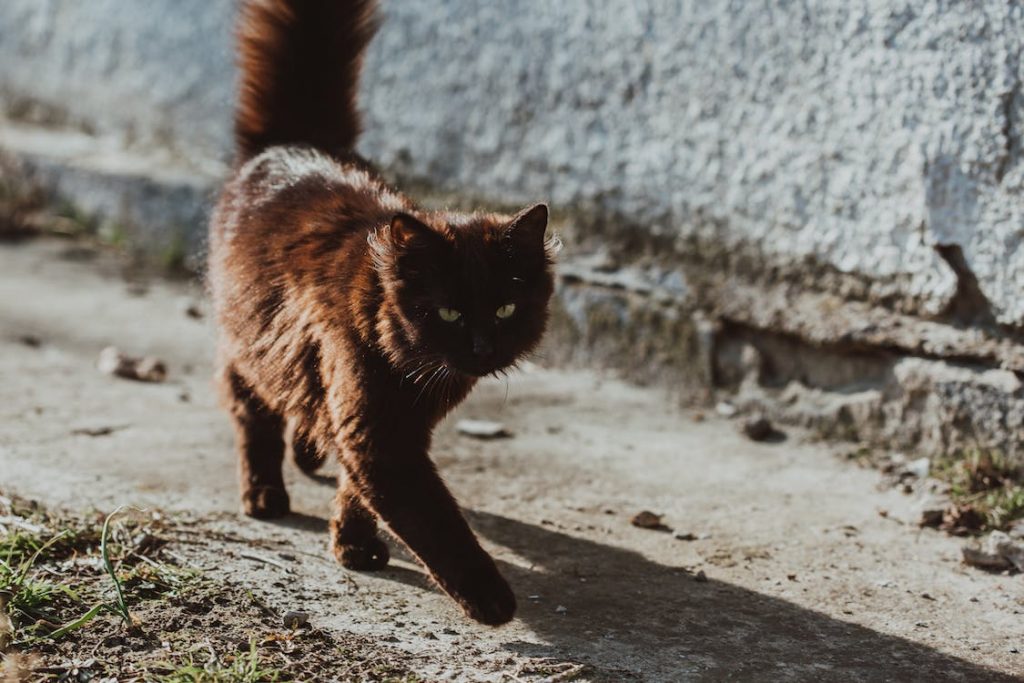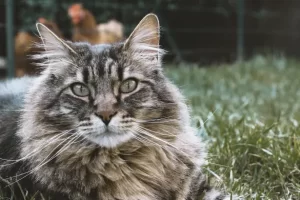
Feral cats are members of domesticated cats that have been riveted to living as wild animals. Most people usually refer to these cats as stray cats but they are not. Feral cats are wild cats and have little to no human interaction. Domesticated cats usually learn how to interact with humans at a very young age. This period is known as the socialization period, and it happens between the ages of two to six months. During this period, kittens learn how to interact with humans and form deep bonds with them. But that is not the case with feral kittens. As offspring of cats that live in the wild, they have no human connection and are very difficult to tame. If you attempt to get close or pet them, they will view you as a threat and will hiss and run away. In this article, we will tell you 12 interesting facts about feral cats.
1. Feral cats don’t meow a lot
One interesting fact about feral cats is that they don’t meow a lot as is the case with most domesticated cats. The reason why feral cats don’t meow often is that they don’t use it as a tool of communication. Domesticated cats meow a lot because they use it to communicate with humans. Feral cats don’t live with humans so they don’t know how to express their needs and wants to people. Instead, they communicate with each other by making cat sounds. They have a wide variety of sounds and each one has its own unique message.
2. Feral cats are not stray cats
Another fact about feral cats is that they are not stray cats. There is a huge difference between a feral cat and a stray cat. A stray cat was once domesticated until it was either abandoned or lost by its owner. Over time, stray cats usually become fearful of humans and even adopt feral cat behaviors. However, because they have had human interaction before, they usually stay close to humans like near carports, homes, or any other area where there are people. Some stray cats can sometimes be adopted into homes. On the other hand, feral cats live their entire life in the wild and do not have any interaction with humans. They are difficult to be tamed and can be aggressive and lash out if cornered or threatened. They are fearful of humans and are happy living outdoors.
3. Feral cats are wild but are technically domesticated cats
Of course, you may wonder how a cat can be wild and domesticated at the same time. Feral cats are domestic cats, only that they are used to living in the wild. They have never had any interactions with humans and are thus fearful of them. If feral cats were socialized from a young age, then they could interact better with humans. However, they have adopted the life of a wild cat because they have lived their life in the wild. So, feral cats are basically domestic cats that live in the wild and have never had any interaction with humans.
4. Feral cats are used to living outdoors
Unlike stray cats that live outdoors because they were either abandoned or got lost, feral cats live outdoors because they like it that way. They have lived outdoors their entire lives and have incredible survival skills. They know how to hunt, take care of their young, and protect themselves and their kittens from danger. They are very comfortable outdoors and prefer to keep things that way. They thrive when outdoors because that is the life that they are used to.
5. Males have a large blocky head
One of the cool facts about feral cats is their head. We can distinguish between a male and a female feral cat by looking at the size and shape of their heads. Male feral cats have large blocky heads which came by as a result of hormones and it helps to protect them against other male feral cats during territorial battles and fight for mates. Male feral cats that have more pronounced large blocky heads usually have an edge over other males and are also able to attract mates with ease.
6. Feral cats don’t thrive in an animal shelter
Although feral cats are domesticated cats, they don’t do well in animal shelters. These cats have lived their entire life in the wild and should be treated as wild animals. They don’t like to be petted or handled by humans in whichever way. They like to do things on their own. If you fail to heed their warning and invade their personal space, they may use their claws to scratch you, which is something you don’t want because you may get a serious infection. So, if you are trying to trap a feral cat and surrender it to an animal shelter, you should stop because it is not a good decision. The reason why this cat is in the wild is because that is where they live and they like it that way. The cat is not lost or abandoned.
7. Feral cats are always well groomed
Because feral cats live in the wild, you would expect their coat to be unkempt and messy. However, that is not the case. Feral cats are always well-groomed with very nice coats. In fact, one of the ways to distinguish between a stray cat and a feral is by how they are groomed. Unlike stray cats that were used to being groomed by their owner, feral cats have been on their own for their entire life and they know how to groom themselves. Their coats are always shiny and well cared for.
8. They are skilled hunters
Feral cats are arguably the most skilled cat breed. The reason why they have been so successful in the wild is that they know how to fend for themselves. They don’t like to feed food that has been left out by humans and that is why it is not easy to spot them around neighborhoods. Both males and females are great hunters and their diet is strictly animal protein.
9. They are very territorial
One of the top reasons why feral cats are hard to be tamed is because they are very territorial. These cats will not hesitate to attack you if you come too close to their personal space. Once a feral cat establishes a home, she will do anything to protect it. That is why they always spray to warn other cats to keep off their territory. They are super aggressive and will hiss, growl, scratch, or bite if someone invades their personal space.
10. They are afraid of humans
Feral cats always do what they can to stay away from humans. Unlike stray cats that always stay close to humans, feral cats usually stay in the wild away from humans. The reason why they fear humans is that they are not used to them. Domestic cats are usually socialized at an early age (from 2 to 6 months) and that is why they get along with humans. Feral cats, on the other hand, have never had any interaction with humans and that is why they are wary of them. They are usually very aggressive when humans get close to them. So, if you are thinking of catching a feral cat that you have spotted in the wild home, know that the experience may not be pleasant.
11. They yowl at night
Yowling is a sound that most cats produce during mating season. Feral cats are wild cats, meaning they are unneutered. As a result, their hormones are always very strong. Male feral cats are always on the lookout for females that are in heat and that is why they yowl a lot at night. Feral cats also yawl when they are bored, fighting with other cats, and also when they are in pain or hungry.
12. They have a lifespan of between 2-3 years
The feral cat breed is probably the one with the shortest lifespan. They have an average life span of between 2-3 years when living alone in the wild. However, when living in colonies, feral cats can live for up to 10 years. The reason why they have a short lifespan compared to other domestic cat breeds is that they live in the wild where they face a lot of challenges including diseases, attacks by other predators, food scarcity, and much more. But if their needs are well taken care of like other domestic cats, they can live for up to 17 years.
Final Thoughts
We hope the 12 facts about feral cats listed above have helped you more about them. Feral cats are powerful and resilient. They are used to doing things on their own. They live in the wild and have very little to no interaction with humans. They are afraid of humans and always stay away from them as much as they can. They are also very territorial and can be aggressive if their personal space is invaded. They have not been socialized and thus difficult to be tamed.


